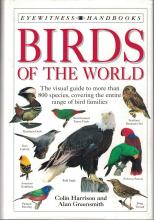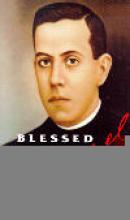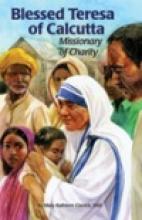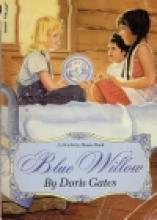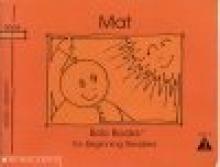No name
Biology for Every Kid
In its segment on "Experiments that Teach Us About Ourselves: The Amazing Human Body" this book provides 35 experiments about the body (the other segments of the book are about plant and animal life. While certainly not a comprehensive anatomy course, the book does provide interesting and simple experiments (which can easily performed at home with fairly ordinary materials) that would provide a helpful supplement to the study of anatomy.
Approximately one third of this book is devoted to "Experiments for the Beginning Biologist: The World of Plants." In the typical Van Cleave style, this segment provides 35 experiments relating to plant life that are simple and informative (and can easily be done in the home). Most experiments are designed to demonstrate certain properties of plant life (such as osmosis and diffusion, what causes plant stems to wilt, what makes plants burst when over-watered, and how water is transported through plant stems). Other experiments determine certain questions such as how plants take in nutrients and whether it matters which direction seeds face when they are planted. Each experiments concludes with an explanation as to the "why" of the results. I find these simple but very helpful (even for moms!).
Another third or so of this book is devoted to "Experiments in the Animal Kingdom: Introductory Zoology." In the Van Cleave style, this segment provides simple experiments (easily performed at home) involving molds, fungi, mini-organisms, yeast, fireflies, butterflies and moths, spiderwebs, crickets, grasshoppers, flies, goldfish and earthworms. In addition to experiments involving observation and/or manipulation of these small creatures, you will find experiments which "illustrate" properties of creatures (such as a camouflage and suction) without actually working with animals.
Birds of the World
This is my favorite of the Dorling Kindersley Eyewitness Handbooks and I would venture to guess that it's probably the best bird handbook you can find. Hundreds of birds, from doves and swallows, to hawks and falcons and tropical birds are included with clear photos, a small map of where they can be found, an icon showing how large they are in comparison to the book, and other basic information about their habitat, migration, etc. Our family has used this guide extensively in identifying and learning more about the substantial variety of birds we find in our own backyard. It's also interesting to see pictures of the sorts of birds we probably won't see in our backyard, such as penguins, turkeys, and eagles. The information appears to be limited to facts about different species of birds, rather than getting into more theoretical and philosophical (not to mention controversial) areas such as evolution and the environment.
Black? White! Day? Night!
Here's a clever picture book about opposites! We loved it so much, the kids told me this had to be a picture book of the week.
Each page has a one-word question, such as "alike?" Each page has one or more cut-out windows, showing a picture–in this case, several "alike" diamonds. Flip the page and the picture of an opposite concept is shown: the little "alike" diamonds were actually all part of several very differently-shaped snowflakes!
Have fun with his colorful and imaginative book of opposites!
Blessed Miguel Pro
Blessed Teresa of Calcutta, Missionary of Charity
This book includes all the elements of a good story: an exciting plot, wonderful hero, and well written. Best of all, the story is true. Interwoven throughout the story are quotes from Mother Teresa. There is also a prayer to Mother Teresa and a glossary. (Intermediate reading level - recommended for ages 9-12).
Blokus
Board game for one to four players.
Blue Willow
This is a beautiful story of family life in difficult times which also offers a portrait of the Great Depression and some lesser-known parts of "old" California. The story will probably be best appreciated (possibly as a read-aloud) for grades 1-4.
Bob Books
The Bob Books and subsequent titles (five sets of small reading booklets in all) are sets of very small, stapled booklets with black and white line drawings and colorful covers, which contain very simple stories. They are approximately $15 per set (although I've seen them at Sam's Club and Half-Price books for less). Each set comes in a colorful box with two little cardboard finger puppets and a cardboard puppet theatre. Although the booklets can hold up pretty well through several children (if you keep them from the little ones, since each book is generally read only once), the puppet theatre and finger puppets, and even the box, will probably not survive long in a busy homeschool family. Although I hesitated for quite awhile to purchase these books because I prefer stories with more beautiful pictures and more meaningful text, I have, in the end, found these books to be quite useful tools in teaching and encouraging reading and motivating children through some of the more tedious stages of getting comfortable with reading. They also fill a need. If you look at early readers at the public library, you will be hard pressed to find anything (except perhaps a bit of Dr. Seuss, who I don't care for all that much) that starts out at such a simple level.
Bob Books First!
In this first set (originally titled simply "Bob Books"), the stories start out very easy (words like Bob, Sam, sat, etc.) and very gradually increase in difficulty. All letters are introduced except "Q" and the stories are made up almost entirely of three-letter-words. We found the pace and order in which new words were introduced to be very helpful. We have used the Bob Books to teach two of our children to read. They were both interested in learning to read when they were four years old. After they had worked a bit on learning the basic sounds of the alphabet, we found this first set to be an easy and rewarding practice for little eager readers. My daughter started this set at age four and finished it early in her Kindergarten year. My son started the set at about the same age, but took a little longer to complete it. Although I try to encourage my children to finish what they start (which generally means finishing a small book at one sitting), there are times when things go much more smoothly when I learned to follow the pace that was appropriate to their needs.
Set contains: 12 stapled softcover booklets of 12 pages each


